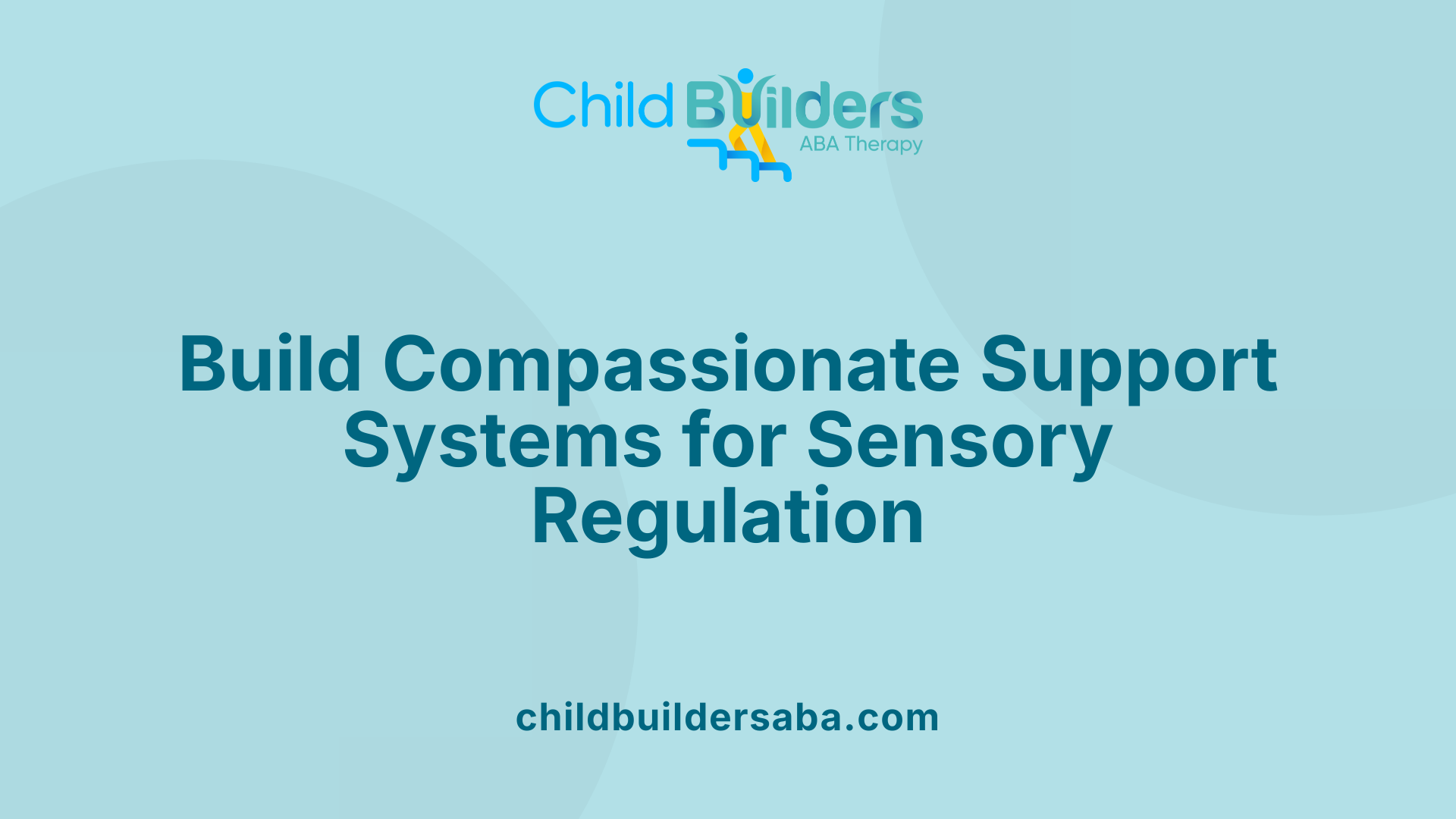Autism Sensory Overload & Overstimulation

Exploring Sensory Overload and Overstimulation in Autism Spectrum Disorder
Sensory issues are a hallmark of autism spectrum disorder (ASD) and encompass a broad range of sensitivities across sensory modalities. These challenges often manifest as sensory overload or overstimulation, significantly influencing behavior, well-being, and daily functioning. This article explores the signs, causes, types, impacts, and management strategies related to sensory overload in autism, aiming to foster greater understanding and support for affected individuals.
The Nature of Sensory Overload and Overstimulation in Autism

What is sensory overload and overstimulation?
Sensory overload and overstimulation refer to situations where a person's sensory system receives more input than it can handle comfortably. This can happen with sights, sounds, smells, tastes, touch, or internal sensations like body awareness. When overwhelmed, individuals may experience distress, confusion, and discomfort, often leading to behaviors like withdrawal, meltdowns, or shutdowns.
Sensory overload is a part of the sensory processing differences common in autism. It occurs when the brain struggles to filter and interpret excessive sensory information, causing a flood of sensations that can feel like pain or intense pressure. Overstimulation, on the other hand, specifically describes the body's physiological and emotional response to this excess input, activating stress responses such as the fight-or-flight reaction.
Difference between hypersensitivity and hyposensitivity
People with autism can experience sensory stimuli as either hypersensitive (over-responsive) or hyposensitive (under-responsive). Hypersensitivity means that ordinary stimuli feel amplified or painful, leading to avoidance or distress. For example, bright lights might cause discomfort, or loud sounds may seem unbearable. Hyposensitivity involves a reduced response, where stimuli might be unnoticed or seeked out; some might enjoy loud environments or crave tactile input.
This variability influences how each person experiences and manages sensory overload. Hypersensitive individuals often react intensely to stimuli, increasing their risk of overload, while hyposensitive individuals might seek out stronger stimuli, which can also lead to overload if their environment becomes too stimulating.
Neurological basis of sensory processing in autism
Research shows that sensory processing differences in autism are rooted in neurological variations. Studies indicate that autistic brains exhibit atypical responses to stimuli, including weaker habituation—a reduced ability to become accustomed to ongoing stimuli. For example, the amygdala, a brain region involved in emotional processing, responds differently in autistic children, contributing to heightened sensory reactivity.
This neurological difference means that sensory inputs either remain unfiltered or exaggerated, making individuals more prone to overload. Many autistic people process sensory information uniquely, leading to behaviors like stimming (repetitive movements or sounds) as a means to self-regulate and manage sensory input.
Signs and symptoms of sensory overload in autistic individuals
Recognizing early signs of sensory overload is essential for providing support. Common symptoms include:
- Physical indicators such as covering ears or eyes, fidgeting, pacing, or wringing hands.
- Emotional signs like irritability, frustration, or withdrawal.
- Behavioral cues such as increased stimming, crying, screaming, or attempts to escape the environment.
- Physical discomfort manifested as headaches, dizziness, sweating, or a racing heart.
- Difficulty recognizing internal sensations, leading to confusion or distress.
These signs often appear quickly after exposure to triggers, with common ones being loud noises, bright lights, crowded spaces, strong smells, or unpredictable routines. The sooner these signs are identified, the better the intervention to prevent escalation.
Triggers of sensory overload
Expectable triggers include environmental factors like:
| Trigger | Description | Common Situations |
|---|---|---|
| Loud noises | Unexpected or continuous loud sounds | Traffic, sirens, crowded events |
| Bright lights | Overly intense or flashing lights | Shopping malls, concerts |
| Visual clutter | Too much visual information | Busy streets, chaotic classrooms |
| Strong odors | Overpowering scents | Perfumes, cleaning products |
| Uncomfortable textures | Irritating fabrics or surfaces | Clothing tags, rough surfaces |
| Changes in routine | Unexpected shifts in daily plans | Last-minute schedule changes |
Environmental chaos, fatigue, or sensory sensitivities can amplify these triggers, making overload more likely.
Impact on behavior and overall well-being
When overwhelmed, autistic individuals often display behaviors aimed at self-protection or escape. These include:
- Increased movement or pacing
- Covering ears or eyes
- Meltdowns or emotional outbursts -shutdowns or withdrawal
- Self-injury or other harmful actions
Prolonged or repeated overload can cause emotional exhaustion, impact mental health, and reduce quality of life. It can also impair social interactions and learning or daily functioning.
Addressing sensory needs and reducing triggers are crucial to support well-being. Creating predictable, sensory-friendly environments helps prevent these adverse effects.
Management strategies during sensory overload episodes
Supporting an autistic person in overload can involve several approaches:
- Creating a safe, calm space: A quiet retreat area with minimal stimuli allows recovery.
- Recognizing early signs: Such as fidgeting, covering ears or eyes, or changes in mood.
- Using sensory tools: Headphones, weighted blankets, or tactile objects ease sensory pressure.
- Deep breathing and relaxation techniques: Help regulate the nervous system.
- Providing reassurance and patience: Avoid forcing interaction.
- Planning ahead: Visual schedules and warnings prepare for changes and challenging situations.
Recovery involves patience, time, and the use of calming strategies to restore composure.
Support for long-term sensory regulation
Building resilience over time includes:
- Understanding personal sensory profiles: Recognizing what triggers overload.
- Environmental modifications: Using sensory aids, adjusting lighting, or soundproofing.
- Teaching self-regulation skills: Such as mindfulness, breathing, or self-advocacy.
- Open communication: Explaining sensory needs to support networks.
- Gradual exposure and coping practice: To increase tolerance and resilience.
Empowering individuals with knowledge and tools helps them better manage sensory sensitivities and reduces the frequency and severity of overload.
The importance of compassionate understanding
A professional like a BCBA emphasizes that sensory overload is a neurological response rooted in brain differences. Support must be compassionate and individualized.
Autistic people are often vulnerable to experiencing sensory and information overload, which can cause stress, anxiety, or physical pain, sometimes resulting in withdrawal, distressed behaviors, or meltdowns.
By fostering understanding and providing tailored strategies, caregivers and support systems can significantly improve quality of life and assist autistic individuals in managing sensory challenges effectively.
Understanding the neurobiology of sensory processing differences in autism
How does sensory overload in autism feel like and how can it be recognized?
Sensory overload in autism is often described as an overwhelming flood of sensory, emotional, intellectual, or social input that the individual cannot effectively process. It can evoke feelings of discomfort, anxiety, or even physical pain. Physically, signs include a rapid heartbeat, muscle tension, headaches, shaking, or difficulty breathing. Behaviorally, individuals may cover their ears or eyes, fidget, pace, or withdraw from the environment. Emotionally, this overload can lead to irritability, emotional outbursts, or shutdowns, where the person becomes non-responsive.
Common triggers include loud noises, bright or flashing lights, strong smells, crowded settings, and intense social interactions. Recognizing early signs—such as covering ears, increased agitation, or distress—is vital. Creating a sensory-friendly environment, providing calming strategies like quiet spaces or sensory tools, and maintaining routine can help manage and reduce the impact of overstimulation.
What neurobiological factors underpin sensory processing issues in autism?
Research into the brain structures involved in sensory processing reveals significant differences in individuals with autism. Key regions include the amygdala, which processes emotional responses, and the sensory cortices, responsible for interpreting sensory information like sight, sound, and touch.
Studies show that in autism, there are atypical responses to sensory stimuli, such as weakened habituation—that is, a reduced ability to decrease responses to repeated stimuli. This results in heightened sensitivity or reduced responsiveness, depending on the individual. For example, some may find bright lights or loud sounds overwhelming, while others may not notice certain stimuli.
Functional brain imaging indicates that these atypical responses are rooted in neural circuitry differences, causing individuals to perceive stimuli as more intense or less manageable. This neural variability underpins many sensory challenges faced by autistic people and underscores the importance of tailored support strategies.
How does atypical brain response contribute to sensory overload in autism?
In autism, atypical neural responses are central to the phenomenon of sensory overload. Weak habituation—where the brain’s response to a stimulus does not diminish with repeated exposure—keeps sensory inputs in a state of heightened alertness. As a result, the brain perceives ongoing stimuli as continually threatening or painful.
This sustained hyper-responsiveness can be traced to irregular activity in both the amygdala, which influences fear and emotional reactions, and the sensory cortices, which process environmental inputs. When these areas do not coordinate effectively, sensitive stimuli become magnified, leading to overwhelming sensations.
Consequently, the individual may experience intense reactions—such as distress, behavioral meltdowns, or shutdowns—prompted by their brain's difficulty in filtering and processing excessive sensory information. Recognizing this neurobiological basis helps in devising strategies like environmental modifications and interventions that align with the brain's processing style, ultimately supporting better regulation and comfort for autistic individuals.
Research Insights and Implications
Emerging research, including neuroimaging studies, reinforces that sensory processing challenges in autism stem from differences in brain responses. Atypical activity in the amygdala and sensory cortices explains the common experiences of hypersensitivity and hyposensitivity.
For instance, Green et al. (2019) highlight that children with autism show abnormal habituation responses. Their amygdala responses remain heightened even with repeated stimuli, making them prone to overload.
Understanding these neural mechanisms guides the development of targeted therapies and accommodations. Interventions such as sensory integration therapy aim to modulate neural responses, although evidence for effectiveness varies. Nonetheless, awareness of the neurobiological underpinnings fosters empathy and supports customized environments that help autistic individuals navigate their sensory worlds.
Summarizing the Brain Structures and Responses
| Brain Region | Role in Sensory Processing | Typical Response in Autism | Implication for Overload |
|---|---|---|---|
| Amygdala | Emotional and threat detection | Hyper-responsive or weakened habituation | Increased distress, fear, and emotional reactions |
| Sensory Cortices | Processing visual, auditory, tactile input | Atypical activation patterns | Difficult filtering or over-amplification of stimuli |
| Prefrontal Cortex | Decision making and regulation | Varied activity affecting response control | Challenges in coping and self-regulation |
Understanding these structures helps clarify why sensory overload occurs and emphasizes the need for environments and interventions that consider the neurobiology of autism.
Strategies to support long-term resilience to sensory overload
How can sensory issues in autism be reduced or managed effectively?
Managing sensory issues in autism involves a blend of environmental adjustments, practical tools, and behavioral techniques. Creating sensory-friendly spaces—like quiet rooms or areas with adjustable lighting—can make a significant difference. Using sensory tools such as noise-canceling headphones, tinted glasses, or weighted blankets helps regulate a person's sensory input.
Occupational therapy, especially sensory integration therapy, is often recommended to improve tolerance to sensory stimuli and develop adaptive responses. Educating individuals and their support systems about sensory needs increases understanding and fosters effective support.
In daily life, implementing de-escalation techniques—like giving space, reassuring, and engaging in calming activities—can prevent or lessen sensory overload episodes. Advocacy for necessary accommodations in educational and work environments ensures sustained support.
Overall, a personalized approach, combining environmental modifications and behavioral strategies, lays the foundation for managing sensory issues effectively and improving quality of life.
What are effective ways to help autistic individuals come down from overstimulation?
When an autistic person is overwhelmed, immediate calming interventions are crucial. Techniques such as deep breathing exercises or structured sensory input like proprioceptive activities (pushes, weight-bearing) can help soothe distress.
Creating a calming environment—dim lights, reducing noise, and providing tactile objects—can foster a quick recovery. Providing access to a safe retreat space where the individual can decompress without sensory overload is essential.
Visual supports and structured routines also support self-regulation, making it easier for autistic individuals to anticipate and manage overstimulation. Teaching self-soothing skills through therapy enhances their ability to handle sensory overload more independently.
Combining these strategies with ongoing support and education helps individuals develop resilience against future episodes of overstimulation, promoting overall well-being.
Building self-awareness and communication skills
Developing self-awareness about sensory sensitivities is vital. Encouraging individuals to recognize early signs of overload—such as fidgeting, covering ears, or irritability—allows proactive management.
Improving communication skills enables people to express their needs more effectively. Using visual cards, social stories, or technology-assisted communication tools ensures they can request breaks or accommodations without frustration.
Enhanced self-awareness and communication reduce anxiety and help in early intervention, minimizing the impact of overstimulation.
Gradual exposure and resilience training
Gradual exposure involves systematically introducing sensory stimuli in a controlled manner, allowing individuals to build tolerance over time.
Resilience training encompasses teaching coping skills, patience, and emotional regulation strategies. Activities might include controlled sensory challenges, relaxation techniques, and mindfulness practices.
This approach helps normalize sensory experiences, reducing fear and anxiety related to overstimulation, and promotes adaptive responses for long-term resilience.
Developing personalized coping mechanisms
Every individual has unique sensory profiles. Personalizing coping strategies—such as preferred sensory activities, calming routines, or specific tools—maximizes effectiveness.
For some, listening to calming music or engaging in tactile calming objects works best, while others benefit from movement-based self-regulation like rocking or stretching.
Continual assessment and flexibility are necessary to adjust coping mechanisms as needs evolve.
Role of therapy and support systems
Therapies such as occupational therapy, cognitive-behavioral therapy (CBT), and social skills training support coping and resilience.
Support systems—including family, educators, therapists, and peer groups—are crucial for reinforcing strategies, providing understanding, and advocating for necessary accommodations.
Building a strong network ensures that individuals receive consistent support tailored to their evolving needs, fostering sustained resilience over time.
| Aspect | Strategies | Details |
|---|---|---|
| Environmental Adjustments | Sensory spaces, tools, routine modifications | Quiet rooms, weighted blankets, visual schedules |
| Immediate Support | Calming techniques, safe retreat spaces | Deep breathing, tactile objects, dim lighting |
| Skill Development | Self-awareness, communication, coping skills | Visual aids, social stories, mindfulness exercises |
| Long-term Resilience | Gradual exposure, resilience training, personalized coping | Controlled sensory exposure, therapy, support networks |
Fostering long-term resilience involves understanding individual needs, ongoing practice, and supportive environments. Combining structured interventions with compassionate support helps autistic individuals manage sensory challenges effectively, leading to greater independence and well-being.
Promoting Understanding and Support for Sensory Needs in Autism
Understanding the multifaceted nature of sensory overload and overstimulation in autism is essential for fostering a more inclusive and supportive environment. Recognizing early signs, identifying triggers, and implementing personalized management strategies can significantly improve quality of life. Through environmental adaptations, proactive planning, and education, caregivers, educators, and peers can help autistic individuals navigate sensory challenges more effectively, promoting their well-being, independence, and resilience. As awareness grows, so does the potential for creating spaces where sensory differences are acknowledged, respected, and accommodated, ultimately enabling autistic individuals to thrive.
References
- Sensory issues - Autism Speaks
- Overstimulation in Autism: Why it Happens & How to Respond
- Sensory differences - a guide for all audiences
- What is sensory overload? What you need to know
- Four Faces of Overstimulation - Autism Spectrum News
- Autism Overstimulation And Sensory Overload - Simply Psychology
- How To Manage (and Even Overcome) Sensory Overload
- Understanding Overstimulation in Autism
- Top 5 autism tips: managing sensory differences
- Sensory overload: Symptoms, causes, and treatment



.jpg)

































































































